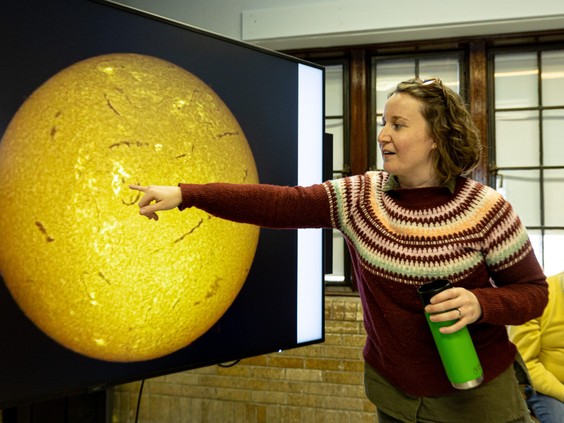
Solar eclipse an opportunity to educate, celebrate and inspire lasting curiosity
Julia Peterson, Saskatoon StarPhoenix
All across North America, millions of people stopped in their tracks on Monday afternoon to watch an astonishing solar eclipse.
For many — whether diehard sky-watchers who’d travelled to the path of totality, or last-minute enthusiasts using homemade pinhole cameras to get a safe view of the phenomenon — it was a last-chance-in-a-lifetime experience, since North America’s next coast-to-coast total eclipse won’t occur for another 21 years.
Between now and then, Daryl Janzen just hopes people keep looking up.
Janzen is an astronomy lecturer at the University of Saskatchewan, and managers the university’s nearly hundred-year-old observatory.
“I truly find astronomy and stars and galaxies and the night sky fascinating,” he said. “I have a lot of curiosity about the universe and what it is, so my passion for the work that I do comes from wanting to understand the greater universe outside of just the world that we live in.”
Janzen is eager to talk about astronomy’s historical and lasting impact on the world — from the early insights into Newtonian physics that came from studying planetary movements through the night sky, to inventions first designed for space travel that are now used to make camera phones, scratch-resistant glasses and better tires.
For most people going about their daily lives, astronomy is rarely the star of the show. So when events like a solar eclipse come along, Janzen sees a great opportunity.
“It’s great when things like this draw people’s attention to astronomy,” he said. “People are naturally curious and want to know things about the universe and the world that we live in, and astronomy is one way to answer those questions. So if looking at the solar eclipse sparks somebody’s interest to explore and understand and learn about stuff that they didn’t know before, I think that’s really awesome.”
In the days before the eclipse, Janzen worked hard to get the observatory’s solar telescope ready for its moment in the sun.
The solar telescope is still a work in progress, he said — Monday’s eclipse viewing was somewhat of a “sneak peek” of the new system for the public — but it’s already opening new frontiers for local astronomy buffs and physics and engineering professionals.
“This solar telescope, piggybacked on our hundred-year-old telescope to take really detailed videos of the sun, is a good use for our old observatory,” Janzen said. “When the observatory was built on campus, there were hardly any buildings around. But now, the city’s built up around it, and we have a lot of light pollution.
“An observatory in the city is not a great place for looking at deep-sky astronomical objects, but the sun is really bright, so light pollution doesn’t really affect that.”
From amateur rigs to high-tech research facilities, Janzen said solar telescopes have become a lot more common in recent years.
Along with important data on solar weather, high-quality solar telescopes can produce some “just really quite amazing” images, he noted.
“You can see all of the gas and filaments and sunspots and granules and textures on the surface of the sun. You can see lots of detail on the sun, because you’re looking at light that interacts with the majority of the gas in the sun’s atmosphere; it’s not just light that passes through.”
With the solar eclipse in the rearview mirror, Janzen and his colleagues will continue working toward building a world-class solar telescope system in the city, controlled by computer-directed robotics and potentially benefitting a global network of scientists.
“This particular telescope we’re planning on adding to the Global Telescope Network at the Las Cumbres Observatory,” Janzen said. “They’re setting up about half a dozen solar scopes around the world, and this just happened to be one of them.”
As recently as last year, data gathered from Las Cumbres Observatory telescopes was used to confirm the success of NASA missions, study gamma-ray bursts and detect planetary collisions in distant solar systems.

